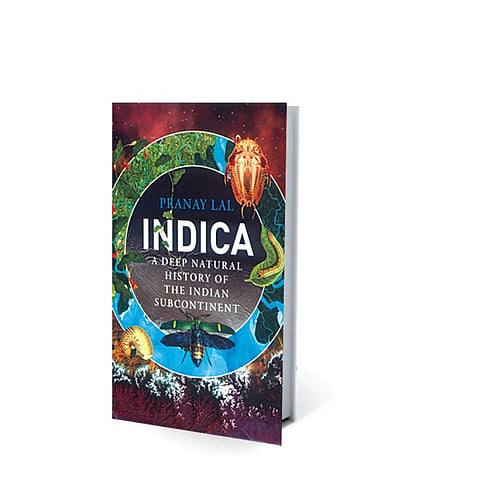
- Destinations
- Experiences
- Stay
- What's new
- Celebrating People
- Responsible Tourism
- CampaignsCampaigns
- SubscribeSubscribe
- Buy Now

As a reader of this magazine, I guess you are a curious wanderer, one who is in search of new destinations and longing to understand what lies beyond. So lets begin by asking, did you know the following facts
There is a place in India called Gondwana junction (not a railway station but a popular tourist spot), a place where India, Madagascar, Sri Lanka, East Antarctica and Australia were joined together billions of years ago. There are places where you can go and spot the earliest known species of a tree, fish and animal in the country. The area where Jaisalmer stands today, imagine a shallow sea millions of years ago.
If you are curious to know about your natural surroundings, particularly interested in palaeontology, geology and biogeography, then Pranay Lals book, Indica A Deep History of the Indian Subcontinent, is a must read. Lal, a biochemist, weaves the story of the Indian subcontinent, how it took shape over millions of years, from hundreds of science papers and interviewsa work that spanned 22 years.
Indica reminds me a bit of Bill Brysons A Short History of Nearly Everything but Lal has his own narrative stylean indulgence in the history of the natural world. The author tries to connect us to places, sometimes with specific geographic coordinates, where we can still experience a slice of a different era. Sample thisOpen Google Earth and type the following...you should be able to see the Dhala crater shaped like the smudged pugmark of a tiger.
Lals research takes us to a place where we can still hold in our hands a primitive fish, the tiny Branchiostoma. For this feat, one doesnt have to go far, as the fish is commonly found on the Chennai shoreline. According to Lal, the next time you are in Marina Beach (at dusk or dawn) try scooping up a bit of sand with your hand from the tide line. Let the sand slip through your fingers and you may find a 5-mm translucent wriggling creature.
To see the earliest surviving plants, one has to travel on the winding hill roads of Sikkim or neighbouring Darjeeling in West Bengal. Here, the author suggests we look for a 320 million-year-old tree fern.
Further east of Sikkim, in neighbouring Arunachal Pradesh, Lals research leads to the velvet worm, which he describes as an elongated caterpillar. One of the earliest animals that made land their home is an organism found in rotting wood and leaf litter in the undergrowth forest of Arunachal Pradesh. These species have hardly been studied in India and we dont know how many different species exist in the country. The only record of the existence of the velvet worm in India comes from the documents of an expedition made in 1911-12 in the Dihang Valley in Arunachal Pradesh.
Such stories abound in the book. Probably the best one is from a village called Raiholi, not very far from Vadodara, Gujarat. For many years, people here were using dinosaur eggs for decorating garden paths. The eggs were thought to be cannon balls. It sounds utterly bizarre but Raiholi is now known to be the largest nesting ground of dinosaurs discovered in India or even in the world, as Lal puts it.
